Last Spring, Digital Media Master’s student and SLS GRA Michelle Ramirez curated and opened an exhibit in the Kendeda Building called Gender Equality: Reimagining our Future through Art and Technology. Last month, Georgia Tech’s Alumni Office sponsored a reception highlighting the exhibit followed by an SLS-moderated panel discussion with four of the accomplished student artists whose work is featured. We are delighted to share below reflections from several of these students on their participation in the exhibit and alumni event and their passion for SDG 5: Gender Equality. If you haven’t yet had a chance to view the exhibit, we encourage you to visit the Kendeda Building for Innovative Sustainable Design very soon, while the exhibit remains on display.
Sylvia Janicki
Thank you to Serve Learn Sustain for this opportunity to have our project, Heart Sense, featured alongside a collection of inspiring artworks that share important stories about resistance, endurance, and community in working toward gender equality.
Heart Sense is an interactive art installation that visualizes biodata in ways that encourage reflection on how our bodies relate to the environment and the bodies of others. It moves away from biomedical interpretations that often portray bodies as mechanical and controlled, and data as objective and universal. Instead, it invites interactions that open up new ways of understanding bodies in intimate, personal, and relational ways.
This project contributes to gender equality in theoretical and intersectional ways, as it breaks down the binaries of objective/subjective, feeling/knowing, and self/other to resist normative and categorical discourses of bodies. One thing I hope visitors can take away from our project through this exhibit is that gender equality is not just about whether men and women get equal treatment, equal pay, or equal rights, even though these are fundamental and important. Rather, advancing gender equality is also about opening up alternative modes of knowledge production and institutional practices that shape our values and understandings of the world.
The UN SDGs outline important and complex global issues that cannot be solved alone by advanced technologies and scientific approaches. While I believe that the rich and valuable resources provided by Georgia Tech are extremely vital in contributing to the education and formation of many gifted technologists and engineers who can solve big problems, it is just as important to ask critical questions. My recommendation for the Georgia Tech community about advancing gender equality and the SDGs here on campus is to encourage and invite students not only to develop solutions, but to ask questions about the technologies they develop and the systems under which they are developed, be critical of dominant paradigms and perspectives and mindful of their positionalities.
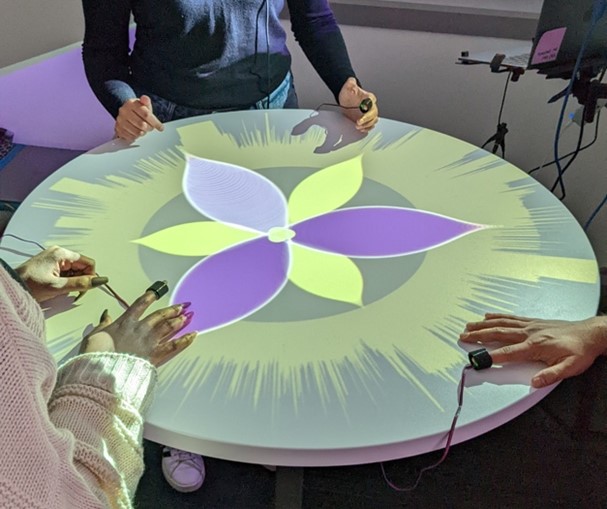
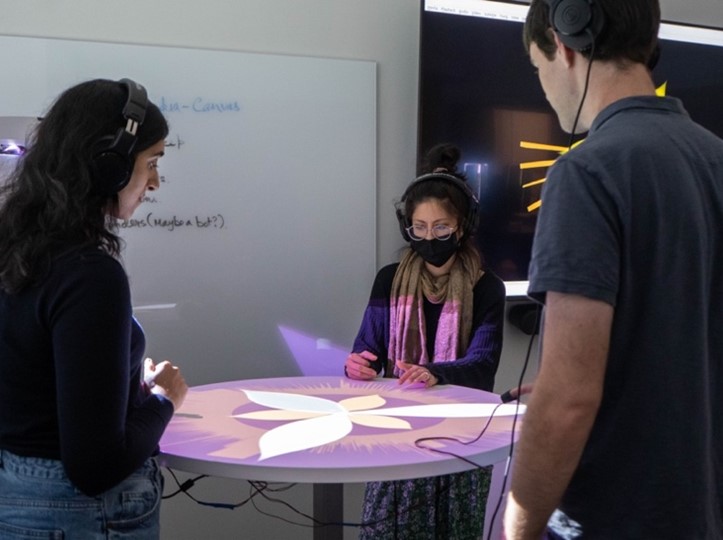
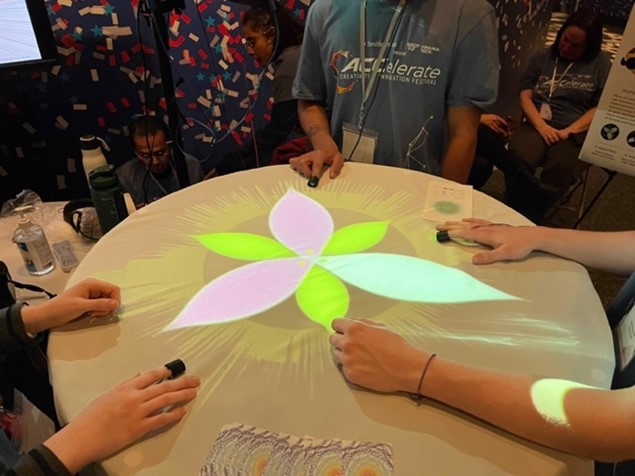
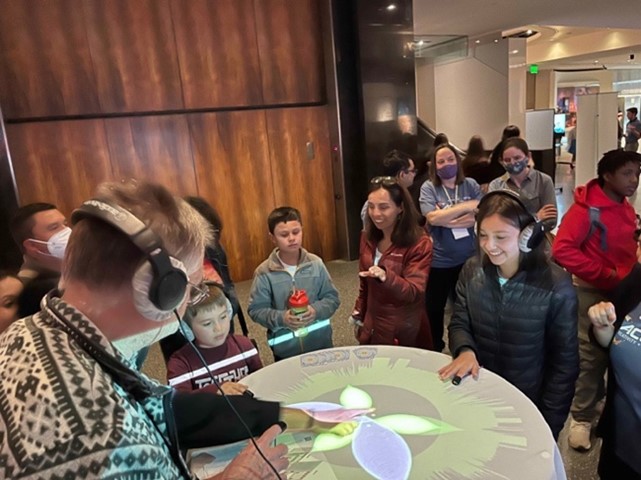
Lastly, I am very grateful for the various campus initiatives, including this one, that provide platforms for artistic and creative engagements on our campus. In many ways, these creative projects contribute to fostering care and emotional connections to others, both human and non-human, that help build the more compassionate and equitable futures.
Heart Sense is an interdisciplinary collaborative project led by PIs Dr. Nassim Parvin, Dr. Anne Pollock, and Dr. Lewis Wheaton. For more on Heart Sense, visit heart.gatech.edu.
Sylvia Janicki is a second-year PhD student at Georgia Tech’s Digital Media program and a member of the Design & Social Justice Studio.
Alexandra Rodriguez Dalmau
Working on my project on Latin American women at Georgia Tech proved to be surprising, heartbreaking, and inspiring. Inquiring around the archives showed me not only the xenophobia that used to be present at Georgia Tech but also the major gender data gap that exists in our records. I hope that my blog and poster about some of the first Latin American students at Tech helps address this gap.
My other submissions were not worked on for a specific class project or exhibition--it was merely my desire to express myself and my thoughts that brought them to life. As I’m doing research about my country, the Dominican Republic, I can’t help but feel too late. I feel nostalgic for a place I haven’t lost yet. I feel powerless against such an imminent threat. The painting shows the Dominican Republic divided and drawn as thoughts, separated or as if dissolving in water. My other piece represents one of the biggest fights for Dominican feminists-- “Las 3 Causales.” This piece highlights the contrast between this political challenge and the tourist perception of the country.
My experience with this exhibit has helped me see how art can be a vessel of knowledge. Sometimes, we tend to separate the arts and the sciences with such passion. This exhibit, however, proves that they can be used to support each other. This exhibition also allowed me to showcase multiple submissions that share important stories--ones that are often overlooked and forgotten. I was able to share my country’s situation as well as the names of important women at Georgia Tech. I hope visitors feel inspired both by what has happened and by the work there is left for us to do.
Advancing gender equality and the SDGs is an ambitious but important goal of Georgia Tech. My advice for Georgia Tech with this objective is to ensure collaboration, understanding, and communication among students, workers, and the community that surrounds the Georgia Tech campus.
Alexandra Rodriguez Dalmau is a third-year undergraduate student majoring in environmental engineering from Santo Domingo, Dominican Republic. She works with Dr. Nisha Botchway and Meaghan McSorley in the Healthy Places Lab at Georgia Tech.
Alexandra Teixeira Riggs
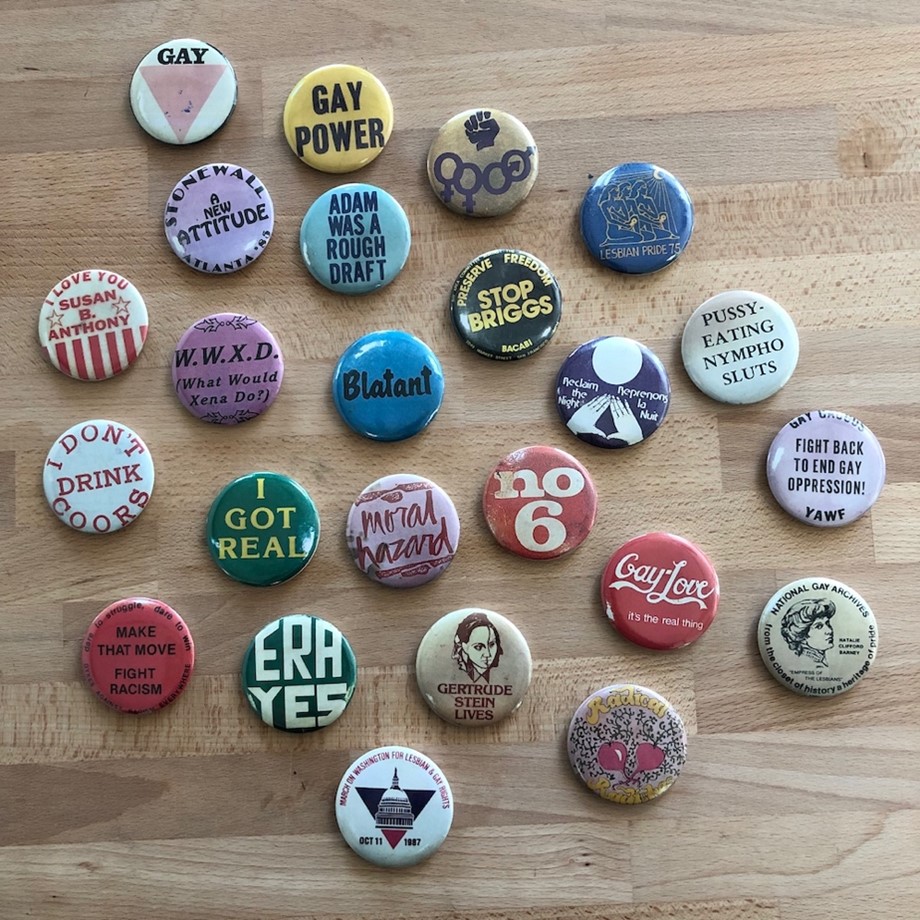 I would first like to thank Michelle Ramirez for curating this exhibition, along with the artists who showed work, as well as our collaborators in the Georgia Tech facilities and administrative departments who made it possible.
I would first like to thank Michelle Ramirez for curating this exhibition, along with the artists who showed work, as well as our collaborators in the Georgia Tech facilities and administrative departments who made it possible.
As I reflect on participating in the exhibition, I would like to acknowledge these relationships, our connections to one another, to our communities, and to our local environment (the traditional homelands of the Muscogee Creek and Cherokee Peoples) as central to our sustainability efforts. Similarly, in my work, I approach the theme of sustainability, and more specifically gender equality, from a collective, embodied, and queer standpoint.
My poster in the exhibition refers to a larger body of work entitled Button Portraits: Embodying Queer History with Interactive Wearable Artifacts, in collaboration with Dr. Anne Sullivan and Dr. Noura Howell. This research uses queer methods and critical archives scholarship to represent queer history with artifacts from the Georgia State Gender and Sexuality Collection.
These artifacts, shown in the exhibition poster, take the form of buttons—the kind that can be pinned to a garment, and tell the stories of activists Lorraine Fontana and Maria Helena Dolan, foundational to LGBTQ+ organizations in 1970s Atlanta. In the full experience, pinning a button on a wearable audio player plays a unique fragment of oral history and displays corresponding archival photographs on a connected mirror. The embodied intimacy of this gesture implicates wearers in history, while reframing our collective relationships to stories through attention to physical experience. Button Portraits metaphorically weaves together oral histories and wearable artifacts to both call attention to and trouble the links between past and present, bodies and environments, navigating the tension of preserving queer experiences while embracing their inherent fluidity.
By participating in the Gender Equality exhibition, I hope that participants not only gain an understanding and appreciation of queer history, but that they also understand gender equality as beyond gender and sexuality binaries. In Button Portraits, I specifically sought to elevate lesbian activists, telling underrepresented stories about Atlanta’s queer history as a partially auto-ethnographic effort. As a queer identified person, I recognize the importance of not only documenting queer experiences, but also sharing and celebrating them widely.
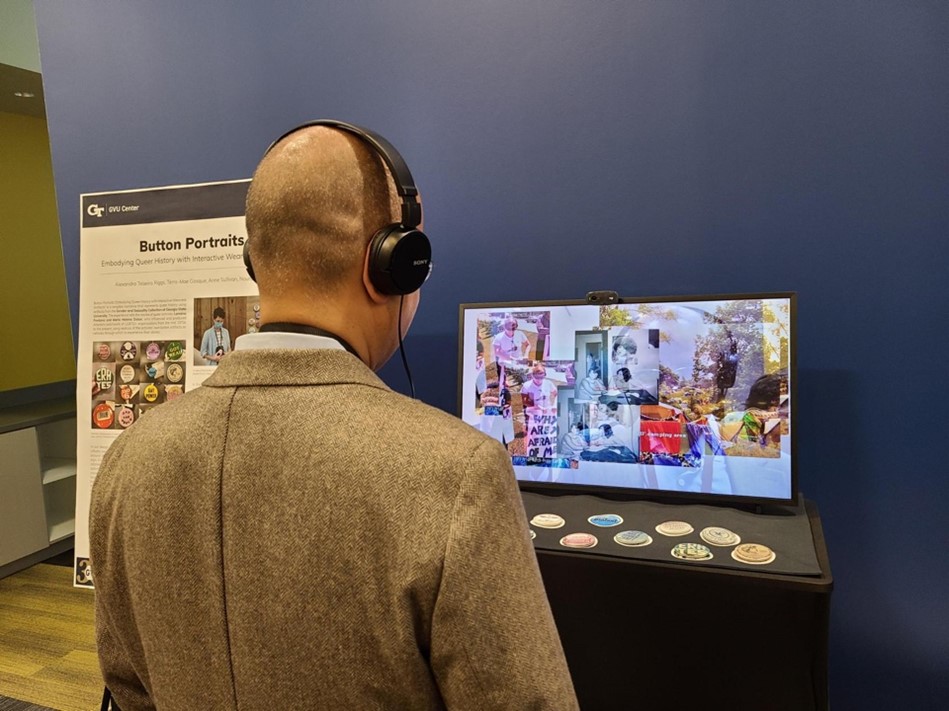
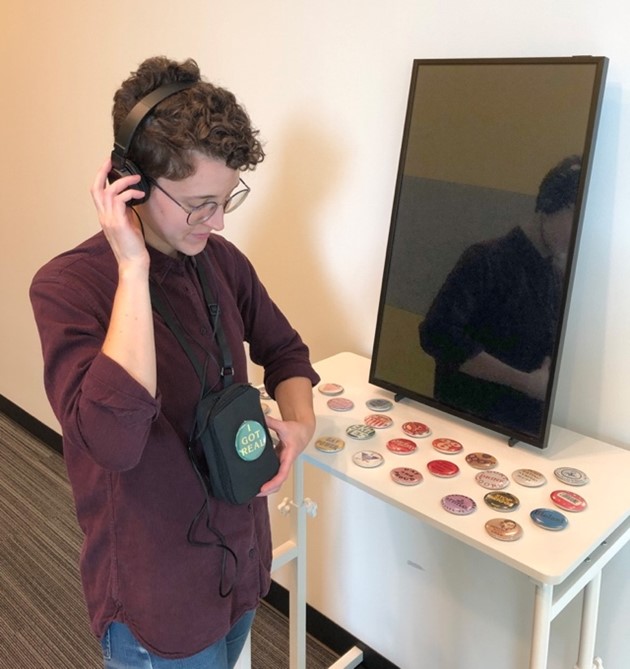
I now seek to work further with projects such as the Georgia Transgender Oral History Project that continue to encourage stories of underrepresented gender identities within the queer community largely. I hope that these efforts in recounting and queering history through embodied storytelling will contribute to a shared understanding of queer experience, amidst larger calls for collective action towards gender equality beyond binary distinctions.
Alexandra Teixeira Riggs (she/they) is a PhD student in Digital Media at Georgia Tech concentrating in queer media studies, critical archives scholarship, and design research.
For more on the project, here is a link to our recently published paper.
Along with more information on the design and experience.